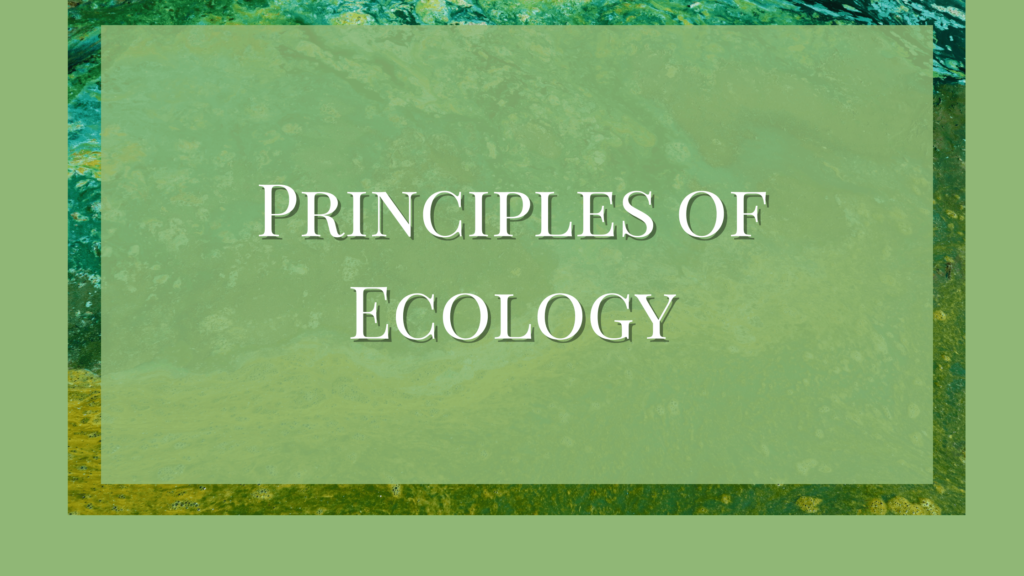The species and its environment in an ecosystem are in a constant relationship. Ecology, the relationship between these organisms and their habitat is based on certain principles. These basic ecological principles cover aspects such as evolution, species distribution, energy flow, substance cycling, and organism interactions with the environment.
Principles Of Ecology
- An environment is everything that influences the life processes of an organism.
- Both biotic and abiotic components constitute the environment of a habitat. The activities of an organism are affected by the combined efforts of all the environmental factors.
- An organism can never exist in a vacuum.
- An organism is just a component of its environment. The abiotic factors are the materials for its use, and the energy required to maintain their body and sustenance.
- The process of energy exchange between an individual and its environment is called life. Death is the cessation of this exchange. un
- Each organism has different environmental requirements that differ with their need and age.
- Environmental components that exist even in a minimal quantity can affect life activities.
- Environmental components in their minimum or maximum quantity can influence the life activities of an organism. For eg, Light, moisture, temperature, nutrients, etc.
- An individual will have different tolerance limits for different environmental factors such as habitats, age, and stages, of their life history.
- The organisms having wide tolerance limits for several environmental factors are distributed widely.
- An organism is a result of the collaboration between nature and nurture. In other words, it is a product of genetic setup and environmental upbringing. Such inherited qualities of an individual are unfolded in a proper environment.
- External stimulations from environmental changes invoke reactions in organisms such as migration, and adaptational changes in morphology, anatomy, physiology, etc., attributed to their survival values.
- The widely distributed species adapt to their habitats by the evolution of ecotypes.
- Every habitat has a carrying capacity or the potential to support a particular number of organisms. Understanding the carrying capacity is important for proper habitat management.
- In any habitat, the biotic and abiotic components are in constant flux, which induces ecological succession with changes in the environment and time.
- The sun is the main source of energy for organisms. They survive by the exchange of this energy from one form to another.
- A large amount of energy is dissipated as heat during transfer from one form to another.
- The energy flow from the sun to plants and subsequently to other organisms is unidirectional.
- Energy and space relations of organisms result in niche differentiation with a habitat. This helps with the ecological stability of a community.
- Life on the earth exists only in the biosphere. But it consists of different habitats called ecosystems.
- An ecosystem is formed of biotic components such as producers, consumers, and decomposers as well as abiotic components such as soil, light, temperature, etc.
- It is the abiotic components that help sustain life.
- The energy flow, the relationship between biotic and abiotic components, and the synthesis of matter in an ecosystem are regulated by ecological processes.
References
- L. (2022, July 23). Principles of Ecology – UPSC (Environmental Geography). LotusArise.
- Shukla, R.S. and Chandel, P.S. (2001) Plant Ecology. S. Chand and Company Ltd., New Delhi.
- Verma, P.S., Agarwal, V.K. (1999). Cell Biology Genetics Molecular Biology Evolution and Ecology. New Delhi: S.Chand Co.(Pvt) Ltd.




